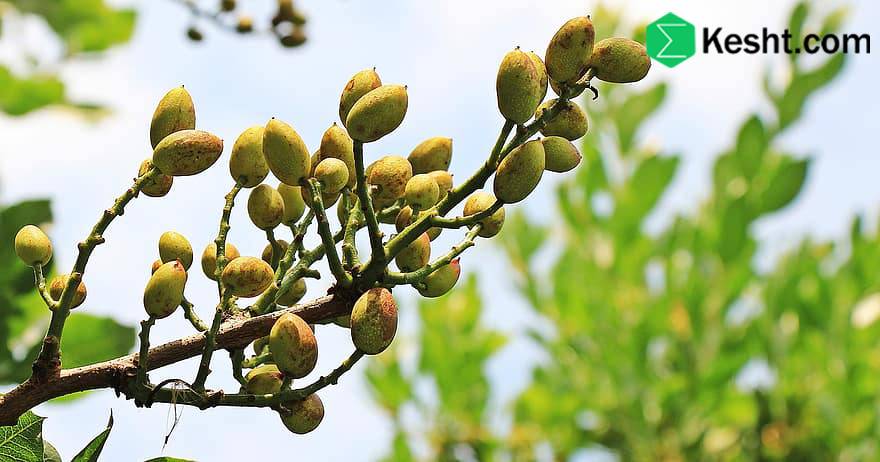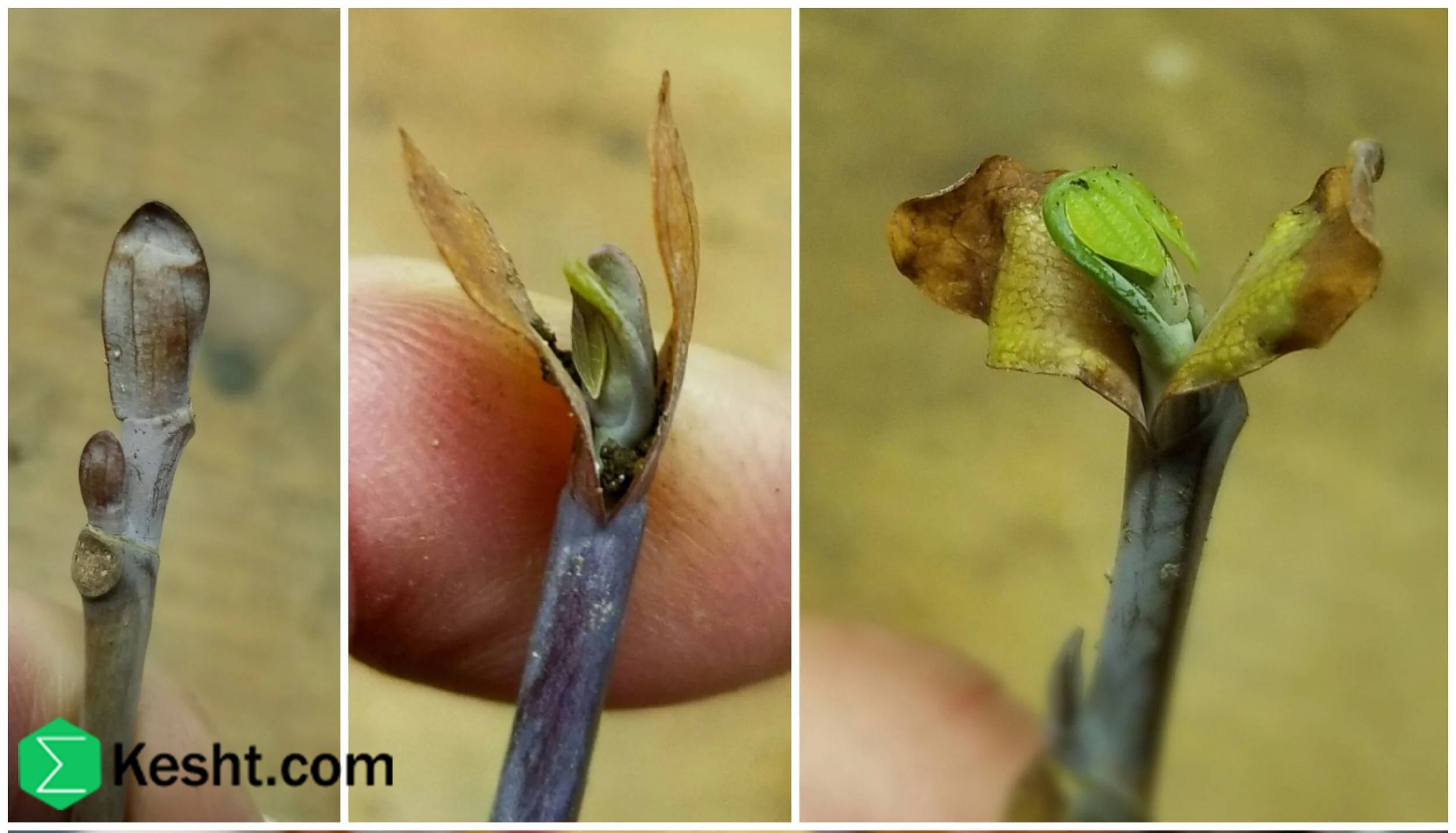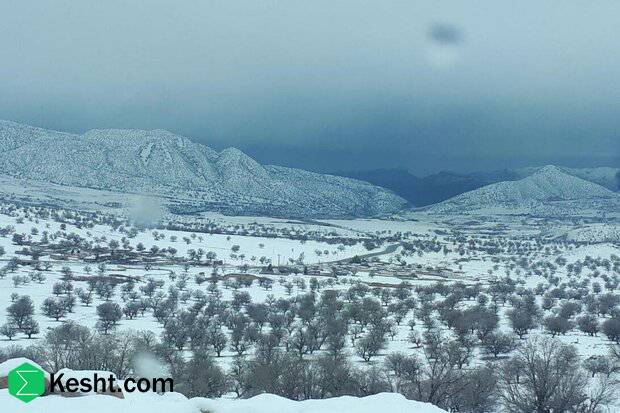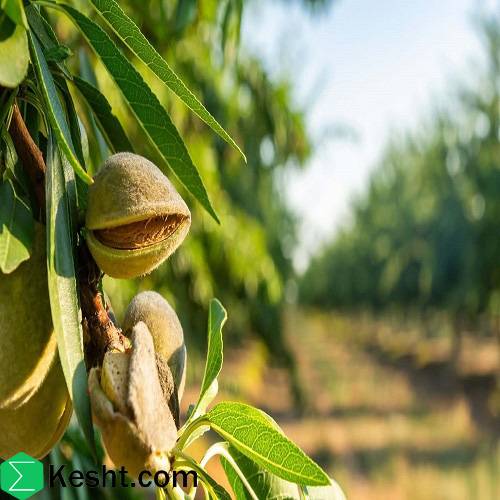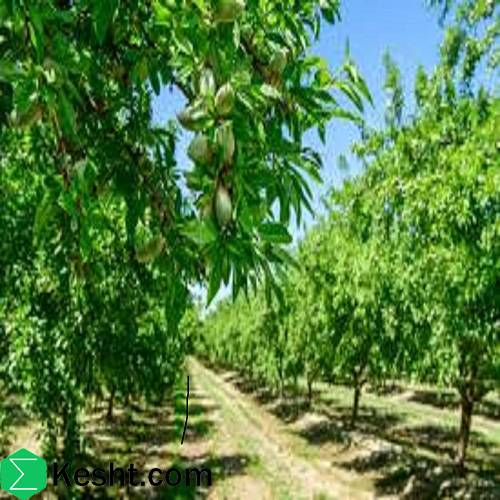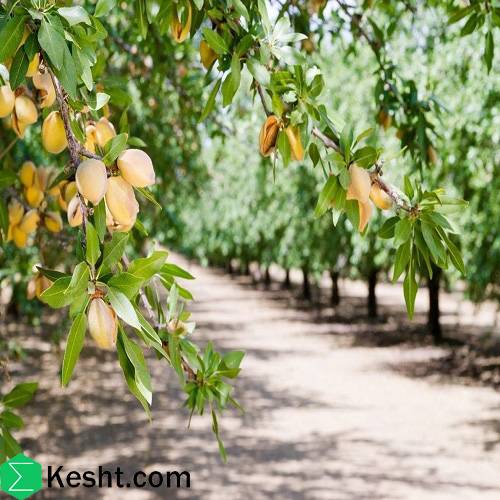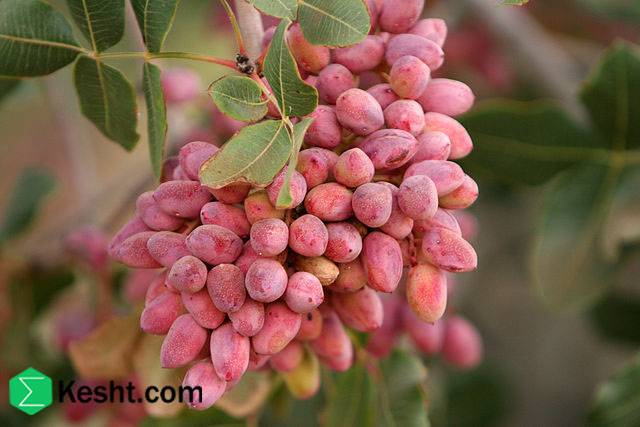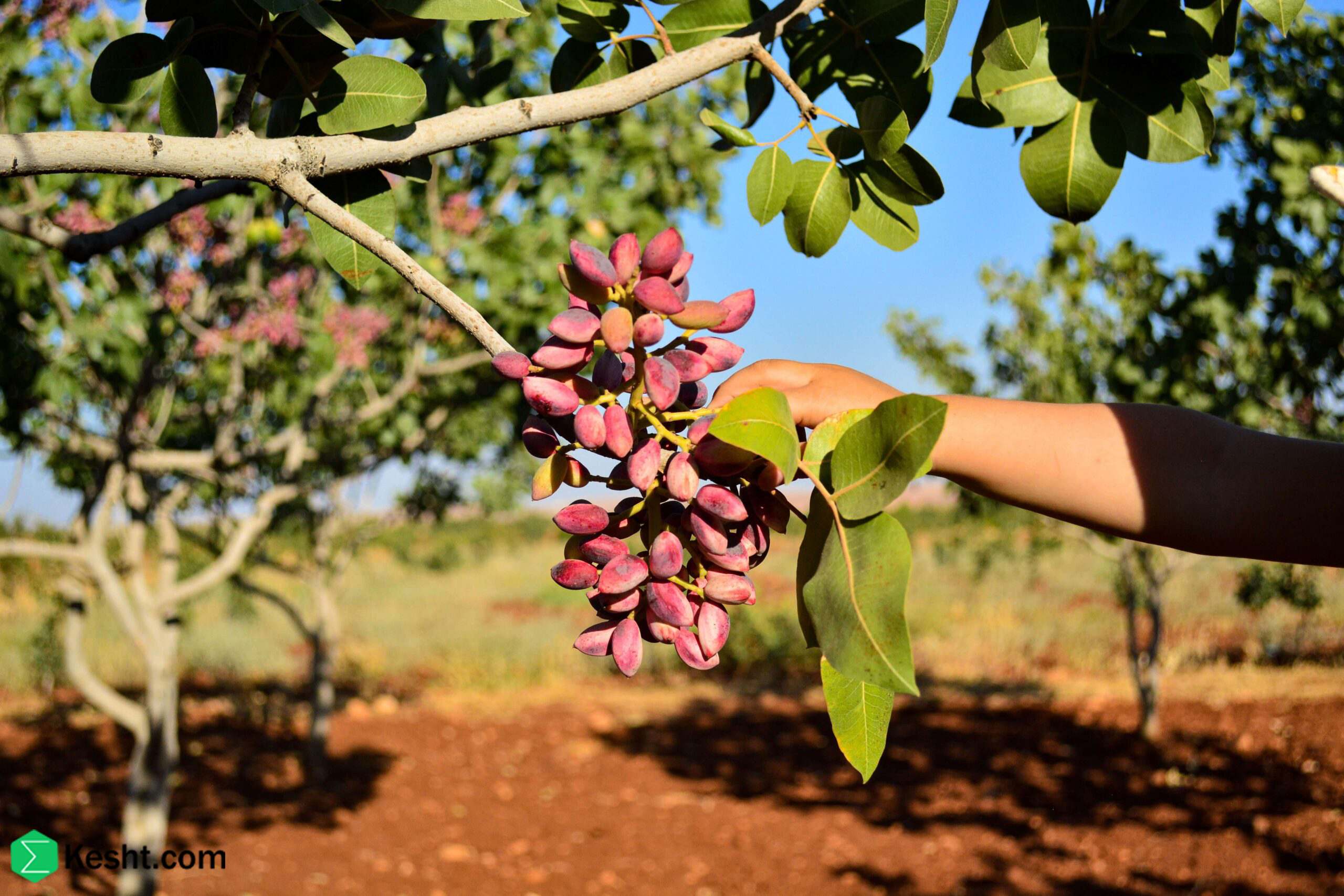How to boost the environmental resilience of hybrid pistachio seedlings
A practical guide to increasing tolerance to stress
At a glance
- Hybrid seedlings (e.g., UCB‑1) are naturally vigorous and somewhat more tolerant, but lasting resilience only comes from strong roots, healthy soil, good‑quality water, and physical protection.
- Year‑one focus: drive deep root establishment, prevent waterlogging/sunburn, keep nutrition balanced, and “harden” the plant gradually.
If you are interested, it is recommended that you read the following article / article title:
best-seasons-to-plant-hybrid-pistachio-seedlings
https://ekesht.com/en/blog/best-seasons-to-plant-hybrid-pistachio-seedlings
1) Site and soil preparation
- Make drainage a sure thing: in heavy/clayey soils, plant on raised beds/berms; keep the crown from ever sitting in water.
- Pre‑plant soil test: correct sodicity with gypsum (if SAR is high); add well‑matured organic matter to improve structure and moisture retention.
- Increase rootable depth: deep ripping/subsoiling along the planting line (if there’s a hardpan) so the taproot can penetrate.
- Beneficial microbiology: dip/inoculate roots with mycorrhizae/Trichoderma at planting to improve drought/salinity tolerance and root health.
2) Resilience‑building irrigation and water quality
- Test water quality (EC, SAR, boron, chloride). If bicarbonate is high, use approved mild acidification to prevent emitter clogging and iron chlorosis.
- Year‑one irrigation algorithm:
- More frequent, smaller sets; keep the root zone slightly moist—not saturated.
- With saline water, run a deeper leaching irrigation every 3–4 weeks (only if drainage is good).
- As the seedling grows, move emitters farther from the trunk and deepen wetting to encourage roots downward.
- Monitoring tools: a tensiometer/moisture probe and a handheld EC pen keep guesswork out of scheduling and salinity management.
3) Targeted nutrition (not too much, not too little)
- Split nitrogen into light, steady doses to avoid overly lush growth; soft tissues are more sensitive to heat/drought.
- Potassium and calcium are key for tissue strength and tolerance to heat/salinity.
- Micronutrients in calcareous soils: soil‑applied Fe‑EDDHA near emitters in early season; zinc/boron by leaf analysis—avoid overapplying boron.
4) Physical protection
- Whitewash the trunk (spring and mid‑summer) and use trunk guards to prevent sunburn and rodent damage.
- In very hot regions, provide 30–50% shade for the first 4–8 weeks; then harden off gradually and remove shade.
- Stake firmly and tie in a figure‑8; fast‑growing hybrids often need sturdier staking to avoid wind breakage.
- Install living or fabric windbreaks along exposed borders.
5) Root management with hybrid stock
- Clonal plants may have stronger laterals and a shorter taproot than seedling types; use deep containers and correct any circling roots at planting.
- Keep the crown area dry; place emitters a little away from the trunk (never wetting the collar directly).
6) Hardening the seedling
- After establishment, introduce small, controlled irrigation oscillations (no severe stress) to encourage deeper rooting.
- Do light structural training; avoid heavy summer pruning. A balanced canopy copes better with heat and wind.
7) Stress‑specific playbook
- Drought/heat:
- Apply a 5–7 cm organic mulch (not touching the trunk), keep irrigation regular, and consider reflective kaolin sprays on sun‑exposed canopies.
- Salinity/sodicity:
- Schedule periodic leaching; apply gypsum on sodic soils; avoid chloride fertilizers in year one; mildly acidify high‑bicarbonate water.
- Cold/spring frost:
- Delay winter pruning, keep a short groundcover until late winter, favor micro‑sites with cold‑air drainage; where equipped, use anti‑frost microsprinklers/wind machines on critical nights.
- Waterlogging/Phytophthora:
- Ridge planting, avoid heavy sets, keep the crown dry; in high‑risk sites, support root health with Trichoderma and improve drainage.
- Sunburn/wind:
- Combine whitewash + shade + staking; maintain some protective shoot density on the sun‑exposed side.
8) Monitoring and rapid response
- Weekly records: growth rate, signs of chlorosis/burn, soil moisture, and leachate EC.
- Mid‑summer leaf sampling to tune nutrition; periodic root checks (small test pit) to verify rooting depth.
9) Choose the right hybrid rootstock/clone
- With Verticillium/replant risk: UCB‑1 is usually the safer choice.
- In cold/frost‑prone climates: hybrids can be tolerant, but beneh/atlantica often has superior cold hardiness—pair the right rootstock with the protective practices above.
10) Mistakes that undermine resilience
- Waterlogging around the seedling (the top cause of weak roots)
- Excess nitrogen creating lush, tender tissues
- Planting pot‑grown trees without correcting root circling
- Skipping whitewash/shade in hot areas
- Neglecting salt leaching when using saline water
- Letting mulch or fresh manure touch the trunk (crown rot risk)
Quick implementation checklist
- Water/soil tests done? Gypsum/acid/organic amendments applied as needed?
- Drainage set and raised beds ready?
- Light, regular irrigation plan plus a periodic deep leach?
- Whitewash, trunk guard, stake, and shade cloth in place?
- Gentle nutrition program (split N + K/Ca) and micros per tests?
- Weekly monitoring of moisture/EC with a simple log?
If you are interested, it is recommended that you read the following article / article title:
When to Spray Almond seedling: A Comprehensive Guide to Pest and Disease Management for seedling
We are the “ekesht” platform — a subsidiary of Samin Atlas Iranians and the only official exporter of BlueLabel seedlings in Iran
Why Blue Label?
Because the world only trusts these seedlings!
Ordinary seedlings (without labels or other labels), even if one of them is infected, can destroy your entire garden — without you realizing it!
But the advantage of Blue Label seedlings:
✅Each of them has a global barcode
✅Tested in advanced laboratories
✅Free from any viruses and microbes
✅The only seedlings that are allowed to be legally exported!
This is important for you if:
- You want to build a garden that is productive and hassle-free
- You are looking for a long-term investment in gardening
- You want to start without stress, without losses, without surprises!
Blue Label seedlings = peace of mind
Because when the seedlings are healthy, the garden stays healthy — and real profits come!
Contact us now — before a random seedling destroys your garden!
Healthy Seedlings = Fruitful Garden = Smart Investment
And that’s exactly what we do at ekesht.
ekesht platform (with fifteen years of practical and successful trade experience with Russia, Kazakhstan, Iraq, China, Turkmenistan, Turkey, etc.) is ready to cooperate with people active in the field of agriculture.
For more information and additional information, please contact us via social media, phone call or email
Phone number:
Email:
Social media address:
